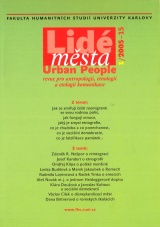Historical-ethnographic Account of a Roma Settlement Near Chminianske Jakubovany
DOI:
https://doi.org/10.14712/12128112.3933Abstract
The article gives a brief monographic depiction of a Romany settlement in Eastern Slovakia, its administrative county and the mutual relationship between the two. The study builds upon a longitudinal stationary research in the locality, which has been carried out by the authors since 1999, but it also utilizes data from archives, registers and chronicles, as well as information from the state administration. The account of the Romany settlement begins with a dissection of its socio-administrative context. The authors then go on to describe the founding and forming of the Romany settlement near Chminianské Jakubovany and briefly mention some basic information about its respective county and its development. After becoming familiar with these connections, chapters on select issues, such as religion, education and the post-1989 changes, follow. The principal interpretation concerning the Romany settlement relies on the analysis and commentary of its greatest specificity, which is the fact that cynophagy (dog-eating) is practised there. This fact is built into the analysis of the kin relations and the specific social organization of the Romany settlement. The settlement near Chminianské Jakubovany, like many other Romany settlements in the region, comprises several kin groups, which define themselves as mutually unrelated. However, genealogical analysis of the settlement revealed that the clans that act as though they are unrelated have in reality originated from a single large family. The final part of the article deals with the issue of relationships between the Romany settlement and its county.
Downloads
Published
How to Cite
Issue
Section
License

This work is licensed under a Creative Commons Attribution-NonCommercial-NoDerivatives 4.0 International License.


